Journal of Alcoholism & Drug Dependence
Open Access
ISSN: 2329-6488
ISSN: 2329-6488
Research Article - (2022)Volume 10, Issue 5
Background: The drugs can cause many alterations affecting physical and mental health in humans. In youth, the drug addiction can cause cognitive distortions that result in behavioral and cognitive.
Aim: To study the impact of drugs on visual attention in minors.
Materials and methods: We performed a randomized case-control analytical study in the Addictology Center and the Child Protection Center of Marrakesh and two schools in Marrakesh. We used the “Bells Test” to evaluate visuo- attention deficits, unilateral spatial neglect and organizational strategies. The statistical analysis has been performed by SPSS software with (p<0.05). We have respected the free consent of tutors, anonymity and confidentiality of participants.
Results: We collaged n=115 minors aged between 10 and 18 years. The minors were divided ontwo groups: G1=55 minors addicted to drugs and the control group G2=60 non-addicted minors. The main used drug was cannabis, tobacco, synthetic glue. We found that 73% of the addicts represent omissions (>6 bells). Three types of hemianopsia dominated: Bilateral Visuospatial Neglect (BVN) noted in 36% (G1) vs. 17% (G2) (p>0.05), right spatial visuo- neglect 24% (G1) vs. 13% (G2) (p>0.05).
Conclusion: The visual attention is significantly affected by the drug’s use. The evaluation of drug effects on neuro- cognitive abilities in young people has shown a significate cognitive impairment.
Neurocognition; Visual attention; Drugs abuse; Addiction; Minors
The use of Psychoactive Substances (PPS) can have many negative consequences for drug users, as well as influences on physical, mental and public health [1]. They can affect judgment, decrease inhibitions, and even lead to loss of memory and decreased intellectual functioning [2]. In young people, adolescents in particular, the risks are multiple; in this critical phase of growth, they show cognitive distortions explaining impulsive tendencies, intolerance to frustration and the inability to contain feelings.
From a psychological and neurological perspective, addiction is a disorder of altered cognition. The brain regions and processes that underlie addiction overlap extensively with those that are involved in essential cognitive functions, including learning, memory, attention, reasoning, and impulse control. Drugs alter normal brain structure and function in these regions, producing cognitive shifts that promote continued drug use through maladaptive learning and hinder the acquisition of adaptive behaviors that support abstinence [3].Visual attention refers to a set of cognitive operations that mediate the selection of relevant and the filtering out of irrelevant information from cluttered visual scenes [4]. The aim of study is to explore the visual attention abnormalities related to drug use in the minors in morocco.
We performed a randomized case-control analytical study in the Addictology Center and the Child Protection Center of Marrakesh and the cases control were recruited from two schools in Marrakesh. We excluded from this study minors who have neurological diseases diagnosed causing Cognitive disorders (Epilepsy, Stroke, Mental Confusion…), Psychiatric disease (Depression, Bipolar Disorder, Schizophrenia, Obsessive Compulsive Disorder (OCD), Threshold Assessment Grid (TAG), Panic Disorder) or Vision dysfunctions (Myopia, Hyperopia, Strabismus). We respected the Privacy and Confidentiality of the participants; the consent of their tutors was required after having explained the progress of the study and the various tests used. Thus, the right to self-determination has also been considered.
Neurocognitive tests
The visual attention function assessed using the “Bells Test”. Data on accuracy and processing speed were compared between groups by ANOVA. The “Bells Test” was devised following the same general principle as the “Albert’s Test”: seven columns, each containing a fixed number of targets. A 21,5 × 28 cm sheet containing different outlines of objects (house, horse, bell…) is presented to the subject (Figure 1). A total of 35 targets (Bells) are distributed equally in 7 columns (Figure 2). In each column, there is the same number of targets (n=5) and of distractors (n=40). All drawings are black like Chinese shadows. Of the 7 columns, three are on the left side of the sheet; one is in the middle and three on the right. Therefore, if the subject omits to circle bells in the last column on the left, we can estimate his visual neglect as being mild. Can suggest a greater neglect of the left side of the space. There are a balanced number of targets in each of the quadrants [5]. Our results are presented according to predefined calibration as ODEDYS (2005 version 2) it’s a rapid test for screening children with dyslexia. In this version it was added some calibration from the CM1 level to college.
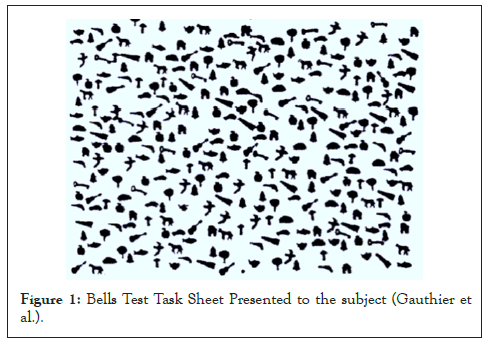
Figure 1: Bells Test Task Sheet Presented to the subject (Gauthier et al.).
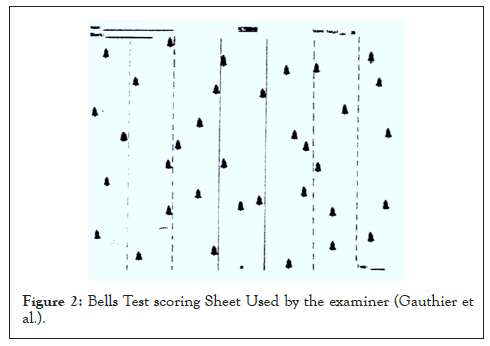
Figure 2: Bells Test scoring Sheet Used by the examiner (Gauthier et al.).
Statistical Analysis and Processing by SPSS software version 20 were performed. Descriptive analysis consisted of the calculation of absolute and relative frequencies for qualitative variables, and positioning and dispersion parameters for quantitative variables (mean standard deviation). The comparison of the qualitative variables was made by Fisher's exact test. The student test and the one-way ANOVA were used to compare the averages. The threshold of significance is retained for a p<0.05.
We collect 115 minors (n=115). The age was between 10-18 years. The sex ratio was 0,8 (M/F). The minors were divided on two groups: (G1) drugs user’s group n1=55 minors; and (G2) no drug users group (control group) n2=60 minors. The two groups are matched in sex and age.
The study of familial situation noted that the minors were adoptive children in G1 32 vs. 1 in G2 (p<0.05). The parents were married in 31 (G1) vs. 51 (G2), divorced 15 (G1) vs. 3 (G2) (p <0.05) and deceased in 4 (G1) vs. 6 (G2). The minors lived with their parents in (G1) were 11 vs. 57 in (G2) (p<0.05) and those did not live with the parents were 49 in (G1) vs. 3 in (G2) (p<0.05).
Drugs use characteristics: The type of used drugs tobacco used in 43 minors, cannabis 37 minors, synthetic glue 23 minors, ecstasy drugs 14 minors, alcohol 20 minors, cocaine 3 minors, maajoun (product consists of a mixture of cannabis derivative and ecstasy which mixed with food) in 14 minors, kala (product of mixture of tobacco with ash chewed in the mouth) in 6 minors (Figure 3).
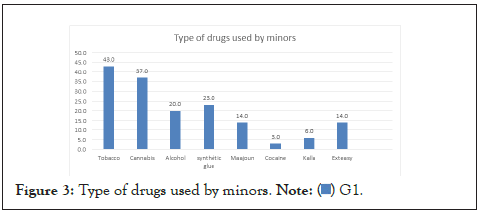
Figure 3: Type of drugs used by minors.
The age of first use of drug in group was 7 years in 1 minor, 8 years in 1 minor, 9 years in 2 minors, 10 years in 5 minors, 11 years in 7 minors, 12 years in 6 minors, 13 years in 13 minors, 14 years in 9 minors, 15 years in 6 minors, 16 years in 4 minors, 17 years in 1 minors (Figure 4).
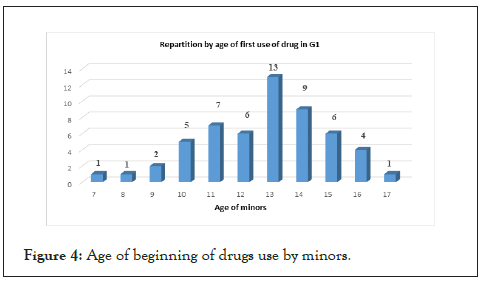
Figure 4: Age of beginning of drugs use by minors.
The duration of drug use was 1 year in 13 minors, 2 years in 7 minors, 3 years in 14 minors, 4 years in 10 minors, 5 years in 3 minors, 6 years in 4 minors, 7 years in 2 minors, 8 years in 2 minors (Figure 5).
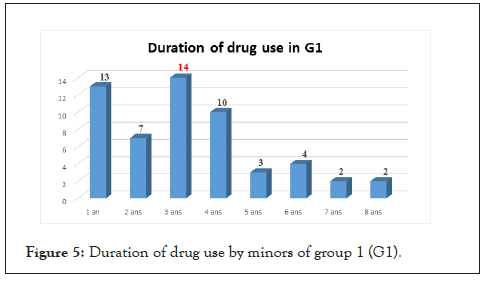
Figure 5: Duration of drug use by minors of group 1 (G1).
The study of the visual intention: The bell test results (Figure 6). The average score of our sample on the bells test of Addicts Group (G1) was 23,27 ± 7,51 vs. 28 ± 5,01 for the control Group (G2). The median score was 26 points for the addict’s minors and 30,5 points for the addicts with 35 points as higher score and 8 points as the lower one. The school level by the groups note significant difference between group 1 the global visual by omission rate note the no omission was 2% in G1 vs. 13% in G2, the omission of 1 to 4 items was 16% G1 vs. 37% (p<0,05), the omission of 5 items was 9% G1 vs. 8% G2 and the omission of 6 items was 73% G1 vs. 42% in G2 (p<0,05) (Figure 7).
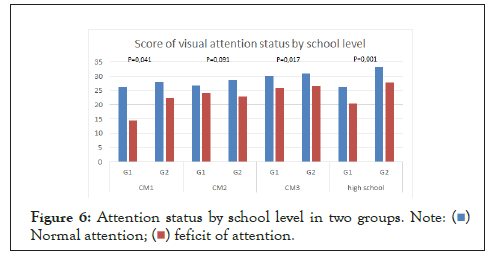
Figure 6: Attention status by school level in two groups.

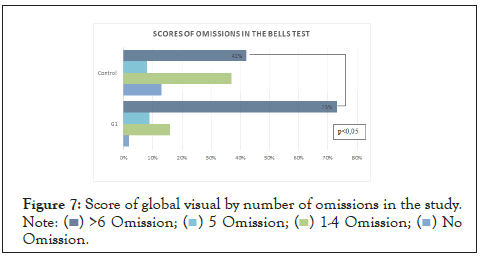
Figure 7: Score of global visual by number of omissions in the study.

The analysis of visuospatial neglect three types of dominate visual neglect Bilateral Visuospatial Neglect (BVN) noted in 36% (G1) vs. 17% (G2) (p<0.05), right spatial visuo-neglect 24% (G1) vs. 13% (G2) (p<0.05), left spatial visuo-neglect 5% (G1) vs. 10% (G2) and central spatial visual neglect 4% (G1) vs. 2% (G2) (Figure 8).
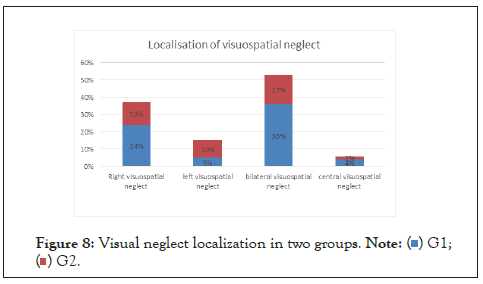
Figure 8: Visual neglect localization in two groups.

The analysis of the groups highlights that the familial situation and matrimonial status of parents of G2 characterized by significant rate of divorce, adoption and environment where the minors lives. The main age of the first drug use was between 10 and 15 years in 34 minors.
The drugs used were mainly cannabis, tobacco, alcohol and synthetic glue. The duration of use was mainly inferior of 4 years.
The Bells test designed by Gauthier, Dehaut, and Joanette for the visual attention evaluation allowed us to confirm that attention is considerably affected in the addict group (23, 27 ± 7.51) [5]. Indeed, the study of the significant omission (6 bells) on the right or on the left noted that 73% of drug addict’s cases presented bilateral negligence (right and left side), and in 36% of them noted a unilateral neglect profile particularly in the right side with 24% of cases.
Neglect most frequently follows right cerebral hemisphere damage, as a consequence of middle cerebral artery territory stroke. Although the abnormality is traditionally most closely associated with parietal lesions, most middle cerebral artery strokes affect several regions and many patients show varying combinations of parietal, temporal and frontal damage. In addition, the neglect can follow subcortical stroke, although this may relate to hypo perfusion and dysfunction of overlying cortical areas.
The several studies suggest that impairments on different types of task more likely localized to different regions. Moreover, neglect results from damage to networks of regions involved in attention. Recent works has shown that it can result from damage to white matter tracts, particularly the superior longitudinal fasciculus, as well as individual cortical and subcortical regions.
The right frontal and parietal regions involved in spatial functions including the deployment of attention are also involved in several non-spatial processes such as vigilance and the ability to maintain performance on a task over an extended period of time. Thus, these non-spatial impairments often associated and or potentially exacerbate the spatial features of neglect. The right hemispheric lateralization of these cognitive domains also explains the increased severity and endurance of left neglect compared to right neglect.
Also, we showed an association of attention deficit with a Visio- spatial disorder, from the scan study of the Bells test. We diagnosed in the group of drug addicts a right semi-neglect probably due to a lesion of the left hemisphere. Indeed, Spatial Negligence (SN) has been defined as a singular difficulty in detecting, responding to or directing one's attention towards stimuli presented on the contralateral side of a brain injury, in particular in the right hemisphere; this syndrome increases the severity of association of motor and sensory deficits and is a predictor of a poor functional prognosis [6].
Elazmy et al. demonstrated in their study carried out with children from 11 to 18 years of age in the Mrirt area (Middle Atlas Morocco) that 21.32% of subjects had attention problems and 4.41% in one profile of right unilateral spatial neglect [7], they associated this attention deficit with learning problems which could hinder the academic success of these children. This finding had been confirmed by several studies which reported the existence of a link between visual processing and academic success [8,9]. The drugs consumed by the young participants in our study will probably affect cognitive functions and engender visual attention deficits as well as visio-spatial hemineglect.
The results of another study showed that several drugs (cannabis, nicotine, ecstasy) disturb the functioning and the different brain regions involved in the attention process, the attentional guidance system and the brain areas associated with this system. Posterior parietal cortex, lateral pulmonary nucleus of the thalamus and superior colliculus, as well as the anterior attention system and the cerebral structures associated with the dorsolateral prefrontal cortex, orbitofrontal, anterior cingulate cortex [10].
Now we have to rethink a Holistic and total care for these young people with neurocognitive deficits because of drug addiction. A number of different techniques have been proposed to rehabilitate the symptoms of neglect. A number of different techniques have been proposed to rehabilitate neglect symptoms.
Over the years, a number of different techniques have been proposed to rehabilitate neglect symptoms. A large number of studies have been published for each approach.
Recently proposed rehabilitation methods such as eye-patching, caloric vestibular stimulation, visiomotor imagery, mirror therapy, Transcutaneous Electrical Nerve Stimulation (TENS),Optokinetic Stimulation and the Constraint-induced movement therapy [11].
The study confirms the effect of the drug’s use on the alteration of the visual attention. The evaluation of the effects of drug addiction, commonly used by young people on cognitive strategy. Drug addiction centers and socio-educational establishments are called upon to rethink the strategies for caring for this population through the development of a more comprehensive care plan for drug addicts which is based not only on the evaluation of physical health, but also on the evaluation and correction of neurocognitive and behavioral disorders linked to drug use and having a direct impact on the academic progress and the future of young people.
[Crossref] [Google Scholar] [PubMed]
[Crossref] [Google Scholar] [PubMed]
[Crossref] [Google Scholar] [PubMed]
[Crossref] [Google Scholar] [PubMed]
[Google Scholar] [PubMed]
[Crossref] [Google Scholar] [PubMed]
[Crossref] [Google Scholar] [PubMed]
Citation: Belcaid HA, Diffaa A, Sebbane H, Belkhouda MA, Assda R, Sedki A (2022) The Impact of Drugs Use on Visual Attention in Minors. J Alcohol Drug Depend. 10:369.
Received: 09-Sep-2022, Manuscript No. JALDD-22-19644; Editor assigned: 12-Sep-2022, Pre QC No. JALDD-22-19644 (PQ); Reviewed: 26-Sep-2022, QC No. JALDD-22-19644; Revised: 03-Oct-2022, Manuscript No. JALDD-22-19644 (R); Published: 10-Oct-2022 , DOI: 10.35248/2329- 6488.22.10.369
Copyright: © 2022 Belcaid HA, et al. This is an open-access article distributed under the terms of the Creative Commons Attribution License, which permits unrestricted use, distribution, and reproduction in any medium, provided the original author and source are credited.